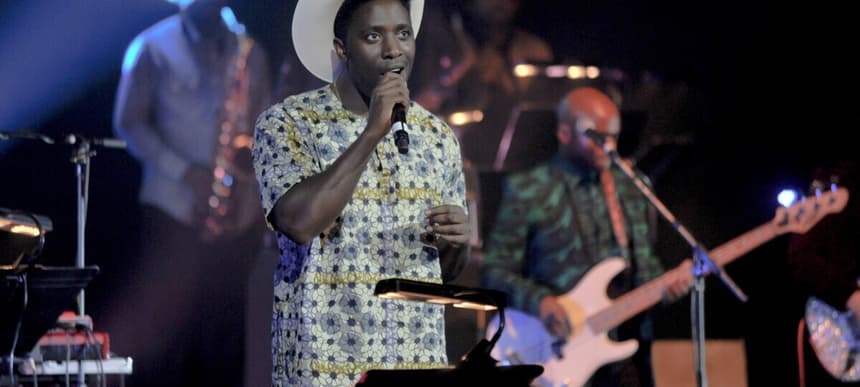
Atomic Bomb: Who is William Onyeabor? at the Barbican Centre, 01/04/14
Nigerian musician William Onyeabor self-released eight albums of ridiculously groovy synth funk between 1978 and 1985 before becoming a born-again Christian pastor and refusing to acknowledge his past. The usual story, then. Most of those albums were impossible to find outside of his own locality, but over the years they developed a small, cultish following among DJs and musicians in the know, from Caribou’s Dan Snaith to Carl Craig to Devendra Banhart to Damon Albarn.
Over the past few months, Onyeabor’s music has been subject to significant critical re-evaluation: after a five-year struggle, record label Luaka Bop managed to track down Onyeabor, getting permission to reissue a small selection of his tracks for a new compilation, ‘World Psychedelic Classics 5: Who Is William Onyeabor?’, the fascinating story of its creator was profiled in a handful of broadsheet articles, Noisey developed a documentary about him, Kindness made a fun music video, and a remix project of the music in collaboration with Moog was soon announced. Most recently, an all-star tribute band was put together to perform Onyeabor’s music live for the first time, debuting at The Barbican Centre in London on Tuesday.
You’d struggle to find a stronger group to update Onyeabor’s music: led by DFA/City Slang artist Sinkane, the tribute band featured Beastie Boys collaborator Money Mark recreating Onyeabor’s distinctive Moog synth lines, human rhythm machine Pat Mahoney (ex-LCD Soundsystem, and currently one half of Museum of Love) on drums, another drummer, another percussionist, a guitarist, a horn trio… and so on. With the additional guest performers (a crew that included Ghostpoet, Damon Albarn, Hot Chip’s Alexis Taylor, Bloc Party’s Kele Okereke, and African crossover singers The Lijadu Sisters), there were never less than 12 people on stage at any one time. Moving through Onyeabor’s 'biggest' songs – Fantastic Man, Atomic Bomb, When The Going Is Smooth And Good are all hits in some other universe – the show felt like a massive dance party, although such an insanely tight rhythm band seemed wasted in the sit-down Barbican Centre (the crowd, to their credit, gave it their all, despite the setting).
Albarn’s presence was the only major misfire of the show. His swagger, a grim hangover from the ‘90s, was laughably out of sync with the rest of the performers. Midway through Fantastic Man, Albarn stopped the band short, insisting that they had to restart so's to give an even better recital in order to do the song justice – only to find that he’d disconnected his microphone, ironically botching the entire thing.
The show was fun, and there’s no denying the band’s genuine love of Onyeabor’s music, but it was also unnecessary. Onyeabor’s music is good, but his story isn’t unique: from Black Devil Disco Club to Vashti Bunyan to Linda Perhacs to Charanjit Singh to Omar Souleyman and beyond, the story of the lost musical pioneer, newly rediscovered and reclaimed, surfaces every few years. Stories like Onyeabor's purport to question music canons, to show that they aren’t infallible – that there's an alternative music history where, in an obscure part of South-Eastern Nigeria, you could find a musician who was funkier than Funkadelic. Yet the continued push of Onyeabor’s music, devoid of any real context (who were his contemporaries, his predecessors, or his successors?), serves only to elevate his music and assimilate it into its own, revisionist version of history.













